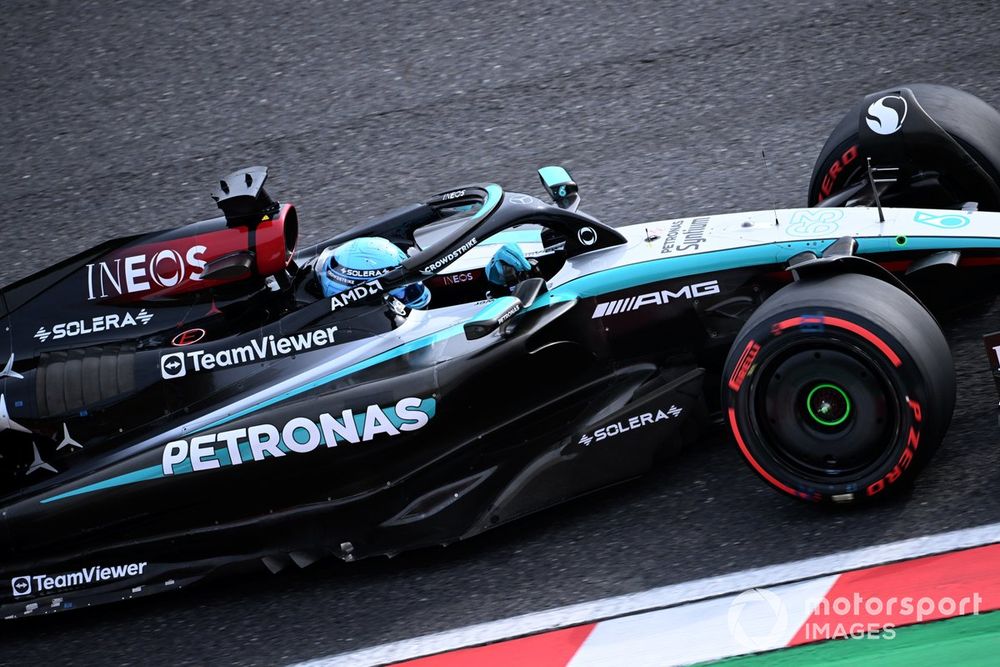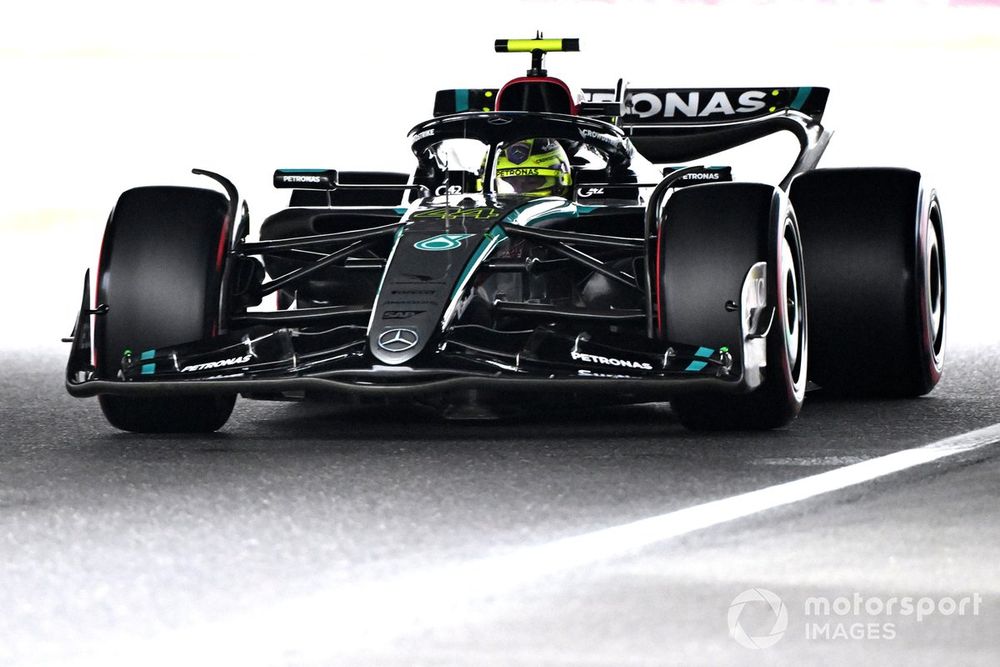For beyond the headline lap times that have hinted at signs of progress in unlocking pace from its W15, the mood of its drivers is far more upbeat than at any point this season.
Indeed, Lewis Hamilton declared that there had been a “night and day” difference in how comfortable he felt in the car – something that has not been common throughout the troubled campaigns Mercedes has endured in the latest ground effect era.
As the seven-time world champion said after qualifying: “Particularly on a track like this, where you need a nice balance, this is the nicest I’ve felt over the last three years.”
What is most intriguing about the Mercedes progress is that it has not come from any specific parts changes made to the car.
The submission sheet that teams have to lodge with the FIA ahead of every weekend for any new components showed that Mercedes had brought no updates to Suzuka.
But the progress has instead come from the team being willing to experiment and adopt a totally different approach when it comes to setting up its car.
Photo by: Mark Sutton / Motorsport Images
As Mercedes boss Toto Wolff told Sky Germany after qualifying: “We tried something completely new. That brought us much closer to the top. In fact, exactly half as close as last year [and] much closer to McLaren. That’s the positive thing.”
As part of the deep analysis that the team has conducted amid its early season struggles, there has been a focus on tyre temperatures – and that perhaps some of its pace has been hampered by a mismatch in how hot the fronts and rears have got.
This could have contributed to the phenomenon that Mercedes technical director James Allison referenced recently of the car falling out of the window when track temperatures ramped up.
“If we were trying to draw that pattern together then probably the strongest correlation that we can make at the moment, is that our competitiveness drops when the track is warm, when the day is at its warmest and therefore the tyre temperatures rise with those of the track,” he said.
“That gives us some clues about what we need to do as we move forward from here. From FP3 to qualifying in Melbourne there was not a set-up change.”
It is understood that for Japan, Mercedes has embarked on a different set-up approach for the car – one that stops over-working the rear axle so much.

Photo by: Mark Sutton / Motorsport Images
The aim is clearly aimed at bringing down the rear…
Click Here to Read the Full Original Article at Autosport.com – Formula 1 – Stories…

